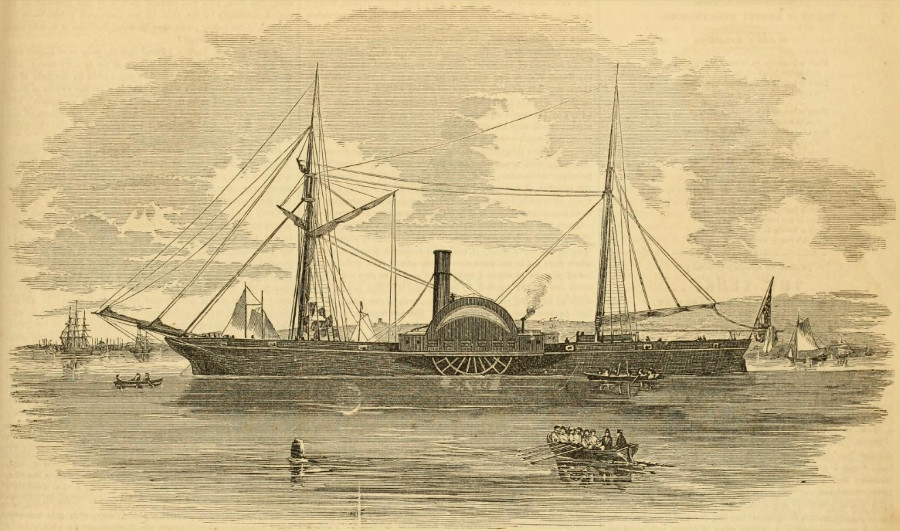 One thing that has always surprised me about the work done at the Washington Navy Yard during the 19th Century was the cavalier attitude towards danger, and how often civilians were invited (or, frankly, invited themselves) to witness events that should have been closed off to anyone not directly involved in them. A good example is the story of Lincoln’s close shave with the Hyde rocket I described last week. Today, we’ll look at another of these close calls.
One thing that has always surprised me about the work done at the Washington Navy Yard during the 19th Century was the cavalier attitude towards danger, and how often civilians were invited (or, frankly, invited themselves) to witness events that should have been closed off to anyone not directly involved in them. A good example is the story of Lincoln’s close shave with the Hyde rocket I described last week. Today, we’ll look at another of these close calls.
August 11, 1854 was a big day for the Washington Navy Yard: A new cylinder was to be cast there. This would ordinarily not be too big a deal, but in this case it was to be “the largest ever attempted at these works,” as the Evening Star reported the following day.
The cylinder was for the USS Fulton, who had been in and out of the yard for a while for repairs. Originally built in New York 1837, her big moment had come the following year, when she had won a speed contest with the British Best Western. Her fame did not last long, as she was decommissioned in 1842. The Fulton was not recommissioned until 1851, when she was also rebuilt for longer range missions. From then until the Civil War, the Fulton sailed from the Gulf of St. Lawrence down to Nicaragua – except when repairs were necessary.
On this day, under the watchful eye of the commandant of the Navy Yard, Hiram Paulding (pictured) a “large number of ladies and gentlemen […] witness[ed] the operation.” This was not a good idea. The fact became clear in the course of the afternoon:
At about ten minutes past five o’clock, the mould, which was within a few pounds of being full, suddenly burst, driving off the hands and company present, and setting fire to the rafters, girders, and building. The explosion was fearful; but it is gratifying to say that not a life was lost.
As news of the explosion spread, workers from all across the Yard downed tools and showed up to help. The first to arrive was the “spouting engine” belonging to the copper rolling mill, which “threw a continuous stream upon the fire.”

The Fulton after its 1851 refit (archive.org)
Next to arrive was the “Anacostia” (presumably the engine from the Anacostia Engine House) They were shortly followed by five other engines from across the city, and their combined efforts saved “some $6,000 worth of property to the Government in preserving the valuable models, &c., of the finishing department.”
Nonetheless, the total damage was calculated at being almost the same amount, and the reason for the explosion was determined to have been river water which had seeped into the bottom of the mould, which had turned into steam when confronted with large amounts of liquid iron.
While there were a few injuries, and the “building to-day presents an awful scene of ruin” the Star opined that “’Uncle Sam’ will soon have it all in order again.”
Whether the ‘ladies and gentlemen’ who had observed the blast would show up again was not mentioned.
